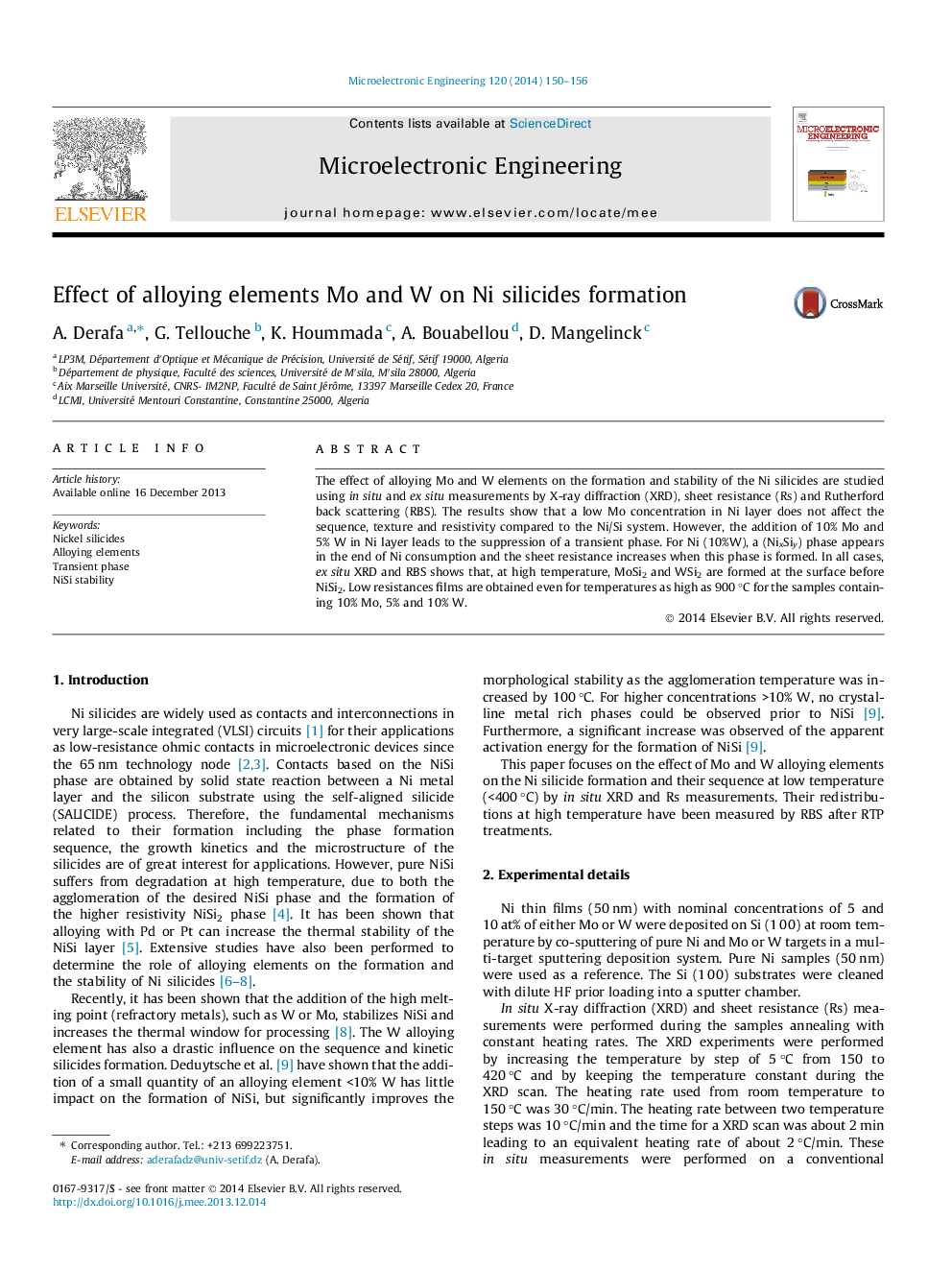| Article ID | Journal | Published Year | Pages | File Type |
|---|---|---|---|---|
| 541323 | Microelectronic Engineering | 2014 | 7 Pages |
•Compared to Ni/Si system Ni 5% Mo/Si does not affect the sequence, texture and Rs.•Addition of 10% Mo or 5% W in Ni layer leads to the suppression of a transient phase.•High resistive NixSiy phase appears in the end of Ni consumption in Ni (10% W)/Si.•MoSi2 and WSi2 phases formed at the surface before NiSi2 at high temperature.•Low resistances are obtained even for temperatures as high as 900 °C.
The effect of alloying Mo and W elements on the formation and stability of the Ni silicides are studied using in situ and ex situ measurements by X-ray diffraction (XRD), sheet resistance (Rs) and Rutherford back scattering (RBS). The results show that a low Mo concentration in Ni layer does not affect the sequence, texture and resistivity compared to the Ni/Si system. However, the addition of 10% Mo and 5% W in Ni layer leads to the suppression of a transient phase. For Ni (10%W), a (NixSiy) phase appears in the end of Ni consumption and the sheet resistance increases when this phase is formed. In all cases, ex situ XRD and RBS shows that, at high temperature, MoSi2 and WSi2 are formed at the surface before NiSi2. Low resistances films are obtained even for temperatures as high as 900 °C for the samples containing 10% Mo, 5% and 10% W.
Graphical abstractFigure optionsDownload full-size imageDownload as PowerPoint slide
